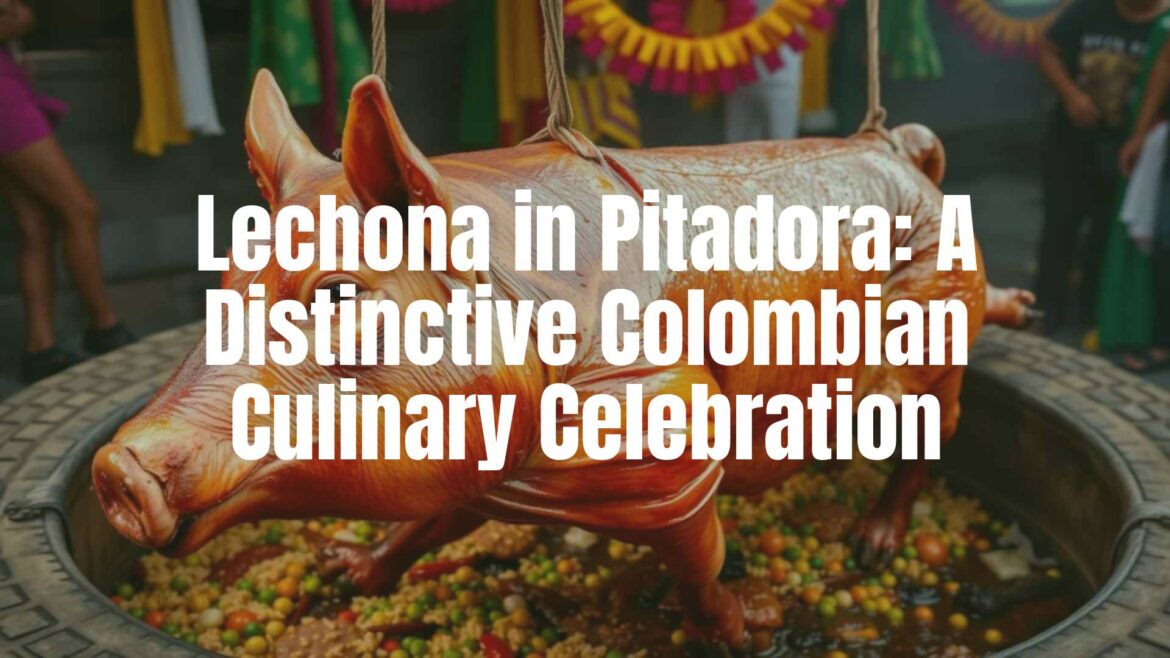An Introduction to Lechona in Pitadora
Among Colombia’s most cherished traditional dishes, lechona stands out as an exquisite dish of roasted pork, stuffed and slow-cooked until irresistibly tender. While lechona is widely enjoyed throughout the country, the variation known as lechona in pitadora reflects a particular approach to both cooking and community celebration, elevating this classic favorite into a unique culinary experience.
Understanding Lechona in Pitadora
At its core, lechona consists of a whole pig, meticulously deboned and filled with a savory mixture of rice, peas, onions, and aromatic spices. The “in pitadora” method refers to cooking the lechona inside a special pit oven (pitadora), often constructed in the ground and lined with stones or bricks. This approach sets lechona in pitadora apart from oven-baked lechona, giving it a distinct smoky flavor and incredibly moist texture, while preserving the crispy skin that enthusiasts crave.
Historical Roots and Cultural Importance
Lechona has roots in Colombia’s Andean regions, particularly in Tolima and Huila, where it is a centerpiece of festive occasions and community gatherings. The use of a pit oven—“pitadora”—is a nod to pre-Hispanic cooking traditions, where earth ovens were employed in collective food preparation. Over time, this method persisted, especially for major celebrations, symbolizing abundance and shared effort.
Ingredients and Preparation Essentials
While every family may incorporate its own blend of seasonings, the primary ingredients remain consistent: pork (including pork rind for that crackling exterior), rice, peas or chickpeas, scallions, garlic, cumin, and sometimes additional vegetables. The filling is painstakingly mixed and spread inside the cavity of the pig. With the pitadora method, the entire stuffed animal is wrapped and lowered into the pit, where it cooks over embers for hours, absorbing the earthy, smoky essence that characterizes this style.
Regional Variations
The most recognized lechona in pitadora comes from Tolima, though the practice has spread to neighboring departments. In some regions, the rice-to-pork ratio may vary, or local beans and spices might be introduced into the filling. What unites all versions is the communal aspect of both preparation and enjoyment—often, neighbors gather to construct the oven and manage the lengthy cooking process.
Serving Traditions
Lechona in pitadora is typically presented at large gatherings such as holidays, weddings, and regional festivals. It is traditionally portioned out onto banana leaves or plates, accompanied by a generous wedge of crispy skin and perhaps a side of arepas or a zesty ají sauce. The convivial spirit and abundant servings underscore its role as a symbol of Colombian hospitality.
Frequently Asked Questions and Tips
Is lechona in pitadora available at restaurants?
Due to the labor-intensive process and space required for a pitadora, this dish is most often found at rural gatherings or special-order events. Some traditional eateries, however, may offer it on festive weekends.
What distinguishes pitadora lechona from oven-roasted versions?
The use of the pit imparts an unmistakable smokiness and depth of flavor, with an especially moist filling and exceptionally crispy skin, setting it apart from more familiar oven-cooked lechona.
Can the dish be adapted for smaller celebrations?
While the classic version is meant for a crowd, smaller portions can sometimes be prepared using custom-built pits or adapted oven techniques, though some of the authentic flavor may be less pronounced.
Conclusion
Lechona in pitadora is much more than a meal—it’s a statement of local identity, community cooperation, and culinary heritage. Whether enjoyed as part of an exuberant festival or in the company of loved ones, it showcases the best of Colombian tradition and flavor.


